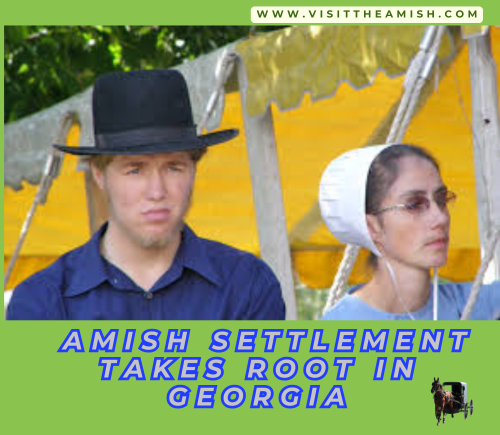A New Chapter: Amish Settlement Takes Root in Georgia
In a surprising turn of events, a new Amish settlement has recently been established in Georgia, marking a significant milestone for the state’s cultural landscape. This development comes after decades of absence, as Georgia has not had an Old Order Amish presence since the 1990s[4].
The New Settlement
The fledgling community has chosen to settle in the picturesque rolling hills of northeast Georgia, near the town of Clayton in Rabun County. This location offers a blend of fertile farmland, scenic beauty, and relative isolation that aligns well with Amish values and lifestyle preferences[1].
Founding Families
The settlement began with five families who relocated from overcrowded communities in Pennsylvania and Ohio. These pioneers were drawn to Georgia’s milder climate, abundant land, and the opportunity to establish a new community rooted in their traditional values[1][4].
Agricultural Focus
True to their heritage, the new settlers have quickly established working farms. They’ve introduced organic farming practices that are well-suited to Georgia’s long growing season. The Amish farmers are cultivating a diverse range of crops, including:
- Peaches (embracing Georgia’s famous fruit)
- Sorghum
- Corn
- Peanuts
Additionally, they’ve started small-scale dairy operations, which are expected to produce high-quality, artisanal cheeses in the near future[1][7].

Challenges and Adaptations
While the Amish are known for their resilience, settling in Georgia presents unique challenges that require careful navigation and some adaptation.
Climate Adjustment
The hot and humid Georgia summers are a significant change from the cooler climates of their previous homes. To cope, the Amish have modified their traditional home designs to incorporate better ventilation and are adjusting their work schedules to avoid the hottest parts of the day[4][10].
Cultural Integration
As with any new Amish settlement, there’s a period of adjustment as the community establishes itself and interacts with its non-Amish neighbors. Local authorities and residents are working to accommodate the Amish lifestyle, including designating safe routes for horse-and-buggy travel[1][4].
Economic Impact and Community Relations
The arrival of the Amish has already begun to make a positive impact on the local economy:
Craftsmanship and Commerce
The settlement has opened a small store selling handcrafted furniture, quilts, and fresh produce. This has quickly become a draw for tourists and locals alike, providing a boost to the area’s economy[1][7].
Agricultural Contributions
The Amish farmers are introducing sustainable farming practices to the region, which has sparked interest among local agricultural communities. Their methods of organic farming and animal husbandry are being observed with keen interest by neighboring farms[1].
Looking to the Future
While it’s still early days for this new settlement, there are signs of growth and stability:
Expansion Plans
The community has already purchased additional land, anticipating the arrival of more families in the coming years. They hope to establish their own school and eventually build a sawmill to support their woodworking enterprises[1][2].
Cultural Exchange
Local schools have expressed interest in educational exchanges, where students can learn about Amish culture and traditional skills. This openness to cultural sharing bodes well for long-term community integration[1][9].
As this new Amish settlement puts down roots in Georgia, it adds a unique thread to the state’s diverse cultural tapestry. The community’s commitment to simplicity, hard work, and sustainable living offers valuable lessons and opportunities for cultural exchange. While challenges remain, the warm welcome from local Georgians and the Amish settlers’ determination suggest a promising future for this new community in the Peach State[1][4][10].
Citations:
[1] https://www.amishfurniturefactory.com/amishblog/amish-communities-in-georgia/
[2] https://groups.etown.edu/amishstudies/statistics/population-trends-1992-2013/
[3] https://go.gale.com/ps/i.do?id=GALE%7CA230766281&sid=googleScholar&v=2.1&it=r&linkaccess=abs&issn=00259373&p=AONE&sw=w
[4] https://amishamerica.com/amish-georgia/
[5] https://amishamerica.com/amish-state-guide/
[6] https://amishamerica.com/southern-amish/
[7] https://www.maconcountyga.gov/mennonite-community.cfm
[8] https://groups.etown.edu/amishstudies/files/2016/06/Population_change_1992-2016.pdf
[9] https://www.georgiaencyclopedia.org/articles/arts-culture/mennonites/
[10] https://www.amish365.com/georgia-on-my-mind/

